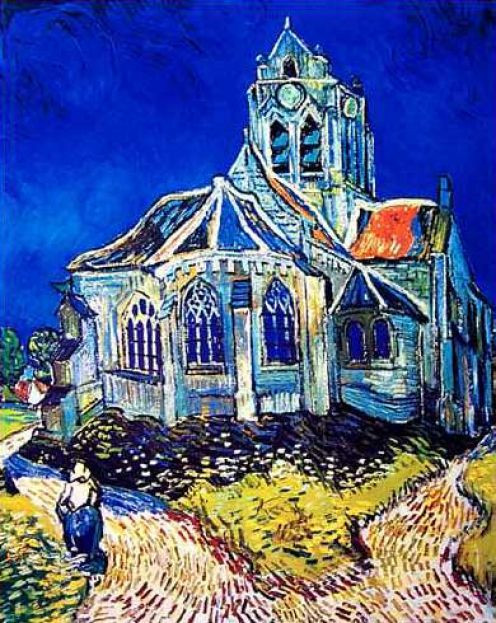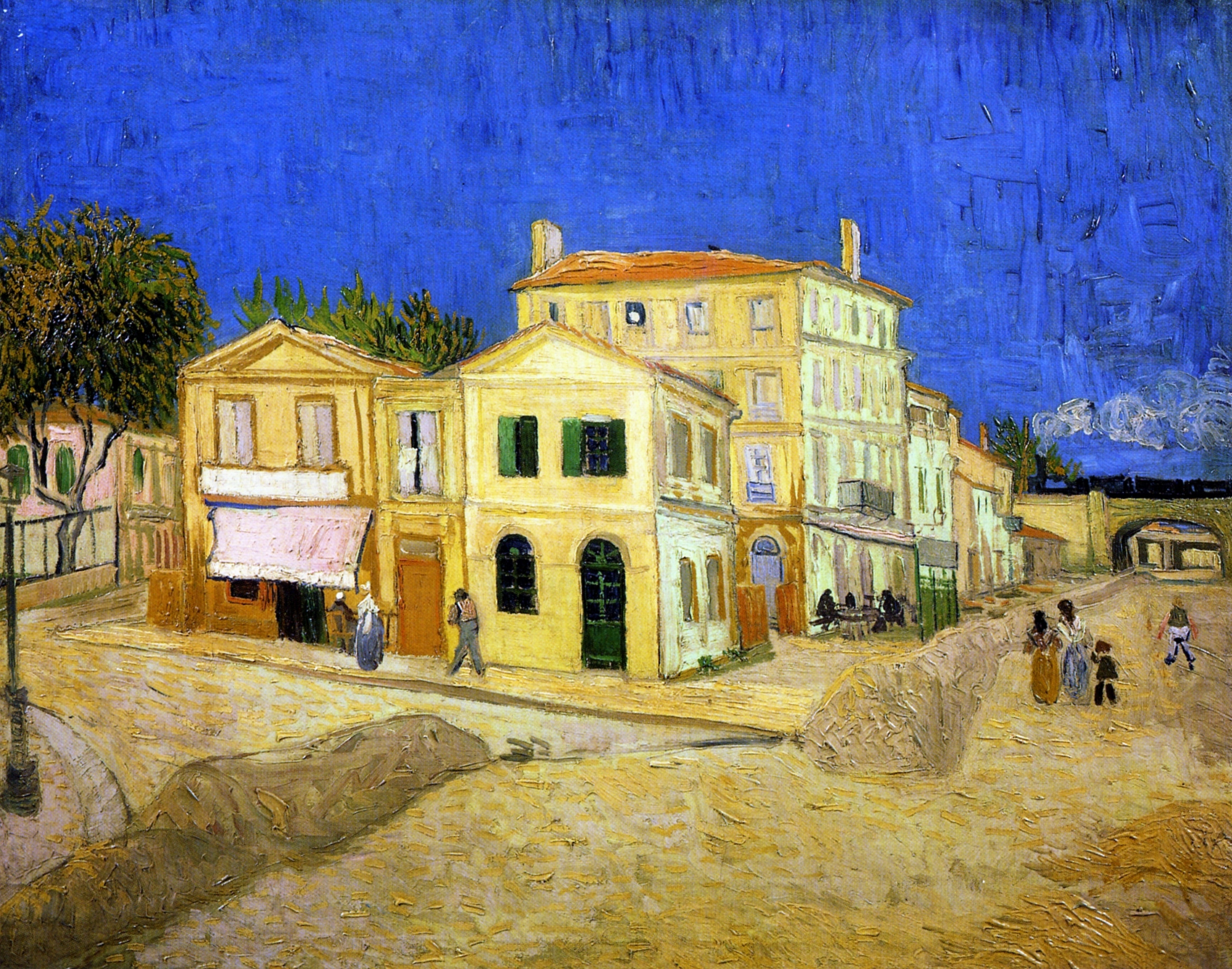The episode “Vincent and the Doctor” remains a poignant and beloved installment in the Doctor Who series. Penned by Richard Curtis, known for his heartwarming narratives, this episode beautifully intertwines the fantastical world of Doctor Who with the real-life struggles and genius of Vincent van Gogh. Let’s delve into this episode, exploring the brushstrokes of brilliance that connect the Doctor, Amy Pond, and the iconic artist.
A Brush with Genius: Unveiling Van Gogh’s World
The narrative commences with a scene bathed in the golden hues of a wheatfield, reminiscent of Van Gogh’s masterpiece, Wheatfield with Crows. We are instantly transported into the artist’s world, observing his passionate creation process.
This idyllic scene abruptly shifts to the Musée d’Orsay in present-day Paris, where an art expert, Dr. Black, elucidates the significance of Wheatfield with Crows as one of Van Gogh’s final, impactful works. It’s here that the Doctor and Amy enter, seeking not art appreciation, but an anomaly within a Van Gogh painting.
Amy, initially skeptical of the Doctor’s unusually amiable demeanor and cultural excursions, is drawn into a mystery when the Doctor notices a disturbing figure in Van Gogh’s The Church at Auvers.
 The Church at Auvers
The Church at Auvers
This sinister face, anachronistically present in a painting from 1890, propels the Doctor to conclude, “Something very not good indeed.” Intrigued and concerned, the Doctor, using his psychic paper to feign official authority, questions Dr. Black about the painting’s creation date, pinpointing it to June 1890. This timeline is crucial, setting the stage for a journey back in time to meet Vincent van Gogh himself.
Time-Traveling to Auvers-sur-Oise: Meeting Vincent
Driven by the ominous presence in the painting, the Doctor and Amy embark on a temporal journey to Auvers-sur-Oise in 1890. Their mission: to find Van Gogh and understand the unsettling element lurking within his art. Emerging from the TARDIS into a night alley, their quest begins in earnest.
Their search leads them to a café, vividly mirroring Van Gogh’s Café Terrace at Night.
This remarkable scene transition from painting to reality underscores the episode’s central theme: bringing Van Gogh’s art to life. They encounter Maurice, the café owner, and a waitress, who express the town’s weary sentiment towards Vincent – portraying him as a disruptive, unpaid patron, oblivious to his artistic genius.
It is here we finally meet Vincent van Gogh, portrayed with captivating sensitivity. He is attempting to trade a self-portrait for a drink, highlighting his unrecognized talent and social alienation. The Doctor, recognizing the artistic giant in this misunderstood man, intervenes, purchasing the painting – Self Portrait with Straw Hat – and initiating a conversation.
Unseen Monsters and Shared Visions
Inside the café, amidst wine and nascent camaraderie, the Doctor and Amy attempt to understand Van Gogh and the looming threat. Amy, feigning art expertise, admires his unfinished La Méridienne, while the Doctor subtly probes about his church paintings.
Their conversation is abruptly interrupted by screams announcing a murder – a horrific event attributed by the villagers to Van Gogh’s perceived madness. The Doctor, recognizing a pattern mirroring the figure in the church window, realizes the danger is not Van Gogh himself, but something unseen.
Seeking refuge in Van Gogh’s cottage, Amy is struck by the profound beauty within the artist’s chaotic living space. Paintings like Bedroom in Arles, Blossoming Almond Tree, Prisoners Exercising (after Dore), Wheat Field with Cypresses, and La Berceuse fill the room, a testament to Van Gogh’s prolific output.
.html)
The Doctor, observing Van Gogh’s casual use of his paintings as everyday objects, understands the world’s undervaluation of his genius. Amy, however, sees the intrinsic worth, proclaiming, “They’re precious to me!”
Battling the Krafayis: Visibility and Vulnerability
That night, an invisible creature, the Krafayis, attacks Amy. Van Gogh, uniquely able to perceive the monster due to his heightened senses, bravely defends them. He sketches the creature, revealing its bird-like, reptilian form.
 The Yellow House
The Yellow House
The Doctor, using a device to perceive the Krafayis, identifies it as a solitary, abandoned creature, driven to violence out of fear and loneliness. He realizes Van Gogh’s empathy and unique perception are key to stopping it.
The climax occurs at the church, the subject of Van Gogh’s painting. As Vincent paints, the Krafayis appears. In a tense confrontation inside the church, Van Gogh, armed with only his easel, confronts the creature. He inadvertently impales and kills the Krafayis, an act born not of malice but self-defense.
A Glimpse into the Future: Impact and Legacy
Following the battle, the Doctor takes Van Gogh to the future, to the Musée d’Orsay in 2010. Here, Vincent witnesses his profound impact on the art world through the passionate words of Dr. Black. Hearing his work lauded as the pinnacle of artistic achievement, Van Gogh is moved to tears of joy.
Returning to 1890, Van Gogh, armed with the knowledge of his future acclaim, expresses a renewed sense of purpose. However, the Doctor and Amy know that history remains unchanged; Van Gogh’s life will tragically end soon after.
Back in 2010, Amy desperately hopes their intervention has altered Van Gogh’s fate, seeking new paintings in the museum. Disappointment washes over her as she realizes history is immutable. Yet, the Doctor points out a subtle, beautiful change: a sunflower painting, dedicated “For Amy,” a personal message across time from Vincent, acknowledging their profound connection.
Conclusion: A Masterpiece of an Episode
“Vincent and the Doctor” is more than just a Doctor Who episode; it’s an exploration of mental health, artistic genius, and the enduring power of human connection across time. It highlights Van Gogh’s unique vision, allowing him to see beauty and monsters invisible to others. The episode poignantly reminds us that even in the face of immense sadness and struggle, beauty and hope can prevail, and that every life, like every Van Gogh painting, adds something valuable to the world. The encounter between Van Gogh And Doctor Who is a testament to the power of empathy and the timeless reach of art.

